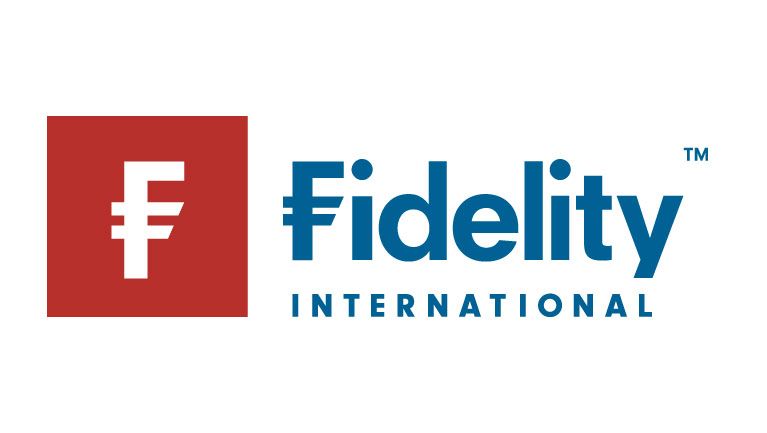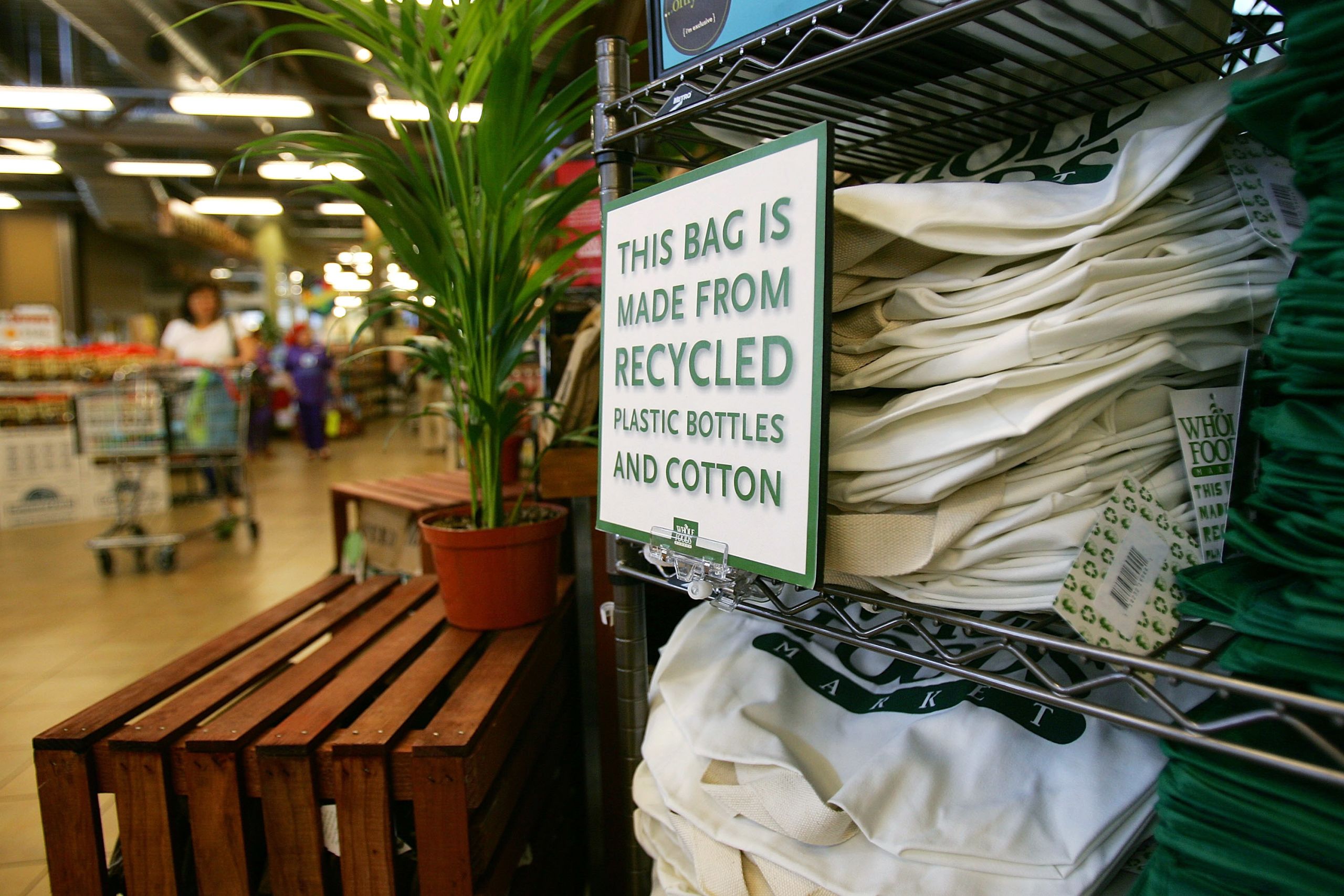The evolution of ESG investing
The ‘carrot’ approach is gaining momentum as a tool to influence corporate behaviour


Impact, sustainable, and environmental, social and governance investment strategies have become popular themes in recent years – a trend set to continue.
But asset allocation is becoming more difficult than at any time in history and the sustainable investment landscape is still shrouded in uncertainty around regulation, terminology and risk profiling.
This special supplement asks what intermediaries need to consider when trying to identify ways in which they can combine ESG funds in a way that aligns with the strategies, needs and risk profiles of clients, as well as taking a closer look at Fidelity’s ESG and sustainable investment strategies.
Sustainable investing is growing up
How regulation, the pandemic and market dynamics are driving change around ESG investing




Two dominant investment themes of recent years have been the rise in demand for multi-asset strategies and the increased client focus on sustainable investment strategies.
But alongside the usual challenges of investing in both of those areas of the market, the pandemic and the policies created to mitigate the present and previous crises have created as many challenges as opportunities, even for investors with a clear track record in the sector.
From a multi-asset perspective, the radical monetary policies pursued by central banks in the decade since the financial crisis have broken down the traditional relationship between bonds and equities, while the policies have also created what look like – relative to history – expensive valuations for all asset classes, including the emerging asset classes of sustainable, impact and ESG investing.
Those three areas are generally distinguished from each other, according to Steve Kenny, commercial director at consultancy Square Mile, by their aims, with ESG funds typically focusing on “exclusions”, that is, not having investments that cause harm included.
Companies with high ESG aspirations are still beholden to the ups and downs of the economy, competition, and subsidy changes
Sustainable funds, which have become the majority, try to find companies that do not cause environmental or social harm, while impact funds actively seek businesses that make a positive contribution to the world.
Antony Champion, head of intermediaries at Brewin Dolphin, says his company's sustainable model portfolio service tends to divide ESG investments into three buckets: “Exclusions: funds that seek to exclude companies involved in tobacco, controversial weapons, thermal coal, gambling, and adult entertainment; ESG leaders: funds that are industry leaders in integrating ESG factors into investment decisions and stewardship activities; and impactful companies: funds that invest in companies which contribute positively and measurably to social and/or environmental challenges.”
Advisers' dilemma
Low interest rates have further boosted the demand from clients to invest in those assets as the returns on cash are so low, creating a situation where investors are enticed to invest in markets.
The pandemic has added to the complications for multi-asset investors, with strategic asset allocation calls hampered by the radical uncertainty of the world we live in – but ESG investments responded well, and generally outperformed the rest of the market in the darkest days of 2020.
This created a steep uptick in demand for sustainable investment products, sending valuations soaring.
All of this presents a pair of challenges for advisers, with asset allocation arguably more difficult than at any time in history and the sustainable investment landscape still shrouded by uncertainty around regulation, terminology and risk profiling.
A particular focus for advisers has been to identify how they can combine ESG funds in a way that aligns with the strategies, needs and risk-profiles of clients, while also making sure that funds which are marketed as ESG or sustainable really do what they say on the tin.
Regulatory approach
Regulation has emerged from the EU that provides clarity for advisers around the extent to which a product is ESG compliant.
It centres on a system of numbers, with funds that have the highest rating (nine) being deemed as having holdings that are all ESG-compliant. A rating of seven indicates that a portfolio is in aggregate ESG compliant and a rating of six indicates that ESG considerations are part of the fund selection process, but that the product is not an ESG mandate.
The Sustainable Finance Disclosure Regulation applies within the EU at present, and not the UK.
But Kenny says many fund houses that have operations in both jurisdictions have highlighted their rating in both, as they want to have the same message in all marketing, so we are getting to the point where the regulations have become part of the fabric of product creation in the UK.
He notes the Financial Conduct Authority is currently working on the question of whether to apply the regulations to the UK – something he expects to happen in the years ahead.
Kenny says he believes that, whatever the regulatory outlook, “in future all money managers will be using ESG or they won’t be managing money”.
Fahad Hassan, chief investment officer at Albemarle Street Partners, says: “By requiring a greater disclosure of ESG data, regulators are hoping investors are well equipped to hold the stewards of their capital to account.
"This shift in data asymmetry away from management will reframe the role companies play in society. While the ESG movement represents a major step forward in shareholder influence it is not the silver bullet for better investment returns.
"Companies with high ESG aspirations are still beholden to the ups and downs of the economy, competition, and subsidy changes. The weight of government support for green initiatives cannot insulate investors from these changing tides. ESG excellence should be viewed as another barometer of company quality.”
In future all money managers will be using ESG or they won’t be managing money
One option available to asset managers seeking structure for their sustainable investing approach is to use data from independent agencies such as MSCI.
Federico Wynne, a financial analyst at Fidelity, says such an approach has its limitations.
He says: "MSCI looks at disclosed data and makes broad assessments based on it. They don’t engage with companies or make in-depth assessments of management strategy or employee culture. Fidelity’s ratings are more forward-looking."
They take the results of engagement and in-depth sustainability assessments into account, while using stewardship to encourage companies in the right direction – sometimes in collaboration with other investors.
"The goal of our process is to improve outcomes for all stakeholders and we believe a forward-looking approach is most effective.”
Engagement
One area that tries to bring together all of the various themes and considerations that matter to both clients and advisers is engagement.
By engaging with investee companies, not only can behaviour in relation to existing societal issues be monitored and potentially changed, but also companies can be made aware of emerging societal concerns and begin to adjust their behaviour and culture in advance of that.
Fidelity says that actively engaging with companies, rather than simply excluding those that do not comply with specific criteria, is the best way to achieve higher shareholder returns.
They use a mixture of external sources and internal research to develop an understanding of a company, and then use engagement to work with the businesses.
Ned Salter, head of global investment research at Fidelity, says all of the portfolio managers at the business are encouraged to ask all of the company management teams, with whom they speak about potential ESG issues, how those issues might impact business performance in the future.
Fidelity says it has noticed a significant increase in the number of companies in the insurance and financial services industry, and has begun to embrace change and take an approach that gives consideration to all stakeholders in a business and not just to shareholders.
The extent to which environmentally sustainable projects are being financed by banks, and wider issues around governance, are significant topics that Fidelity engages with financial services companies on.
david.thorpe@ft.com
The role of engagement in sustainable investing
How firms can use their investing power and influence to drive change

It’s the very fact that Asia has the scope to transform its ESG landscape and become a world leader in sustainability, that makes it an even more exciting prospect.

There was a time when the asset management industry’s approach to sustainable investing was to offer funds that simply excluded stocks.
These funds would typically avoid being invested in controversial sectors, including weapons manufacturing, mining, tobacco and gambling.
Over the past few years, there has been a huge change in the investment process behind environmental, social and governance (ESG) or sustainably invested funds.
The shift away from a purely exclusionary approach came as firms realised they could make more of a difference at an ESG level by investing in companies, with a view to using their influence to drive change.
Fidelity International is focused on engagement as a way of delivering better investment outcomes.
The firm supports engagement in the belief that pulling companies along with it is better than punishing companies by not investing at all.
However, it still employs a firm-wide exclusions list which lists cluster munitions and antipersonnel landmines as examples.
They have created a principles-based exclusion framework with the aim to ensure that issuers in which these funds invest meet certain sustainable standards and behave in a manner consistent with responsible investment values.
A more stringent exclusion list covers manufacturers of controversial weapons, civilian firearms and tobacco, as well as companies in violation of the 10 principles of the UN Global Compact.
By acting as a steward of its clients’ capital, Fidelity seeks to help investors build better futures, both financially and in terms of environmental and social impact.
Three is the magic number
Three elements form the cornerstone of Fidelity’s approach to sustainable investing: integrated sustainability analysis, corporate engagement and collaboration with policymakers, industry groups and non-governmental organisations around the world.
This three-pronged approach enables Fidelity to identify the companies operating with high standards of corporate responsibility and it also flags where ESG improvements can be made.
Taking that first element, integration requires a little digging, conducting rigorous research.
Fidelity then integrates its assessment of companies’ sustainability metrics throughout the investment process and across its key investment teams in equities, fixed income and multi-asset.
For the real estate team, sustainability considerations are integrated through the entire life-cycle of ownership, from purchase, ongoing management, refurbishment, development and ultimately sale of the assets they invest in.
With no stone left unturned, Fidelity is able to use its extensive scale and resources to influence corporate behaviour through that all-important second element, engagement.
Only through direct dialogue with companies and through the use of proxy voting and shareholder resolutions can Fidelity hope to improve issuer behaviours over the long-term.
Thirdly, collaboration is part of its approach to deliver improved sustainability outcomes to investors.
Members of the Sustainable Investing Team are committed to working with external and collaborative sustainability-related bodies which aim to advance the way industries are regulated and companies are managed.
In-house ratings
Having developed its own propriety Sustainability Ratings, Fidelity is in a position where it does not have to rely only on public disclosures to form a view on a firm’s sustainability.
“Fidelity’s in-house ESG ratings system allows us to formalise and quantify ESG ratings.
"But it also forces analysts to compare and contrast the companies within their sectors.
"It makes you take less of a historical view and more of a forward-looking view for ESG companies,” says Dr Judith Finegold, equity research analyst and portfolio manager in a recent video produced by Fidelity.
According to Martin Dropkin, head of Asian fixed income, 180 analysts across equities and fixed income conduct around 16,000 meetings per year.
“They’ll take the information that comes out of meeting chief executives and chief financial officers, and they’ll build that into a sustainability rating,” he explained.
Fidelity’s in-house ESG ratings system allows us to formalise and quantify ESG ratings. But it also forces analysts to compare and contrast the companies within their sectors.
Ned Salter, global head of investment research, says the ratings are intended to be “authentic and embedded into our investment process”.
Fund range overview
Fidelity believes that European companies are among the best when it comes to disclosure, given their 20-year heritage of CSR reporting.
The newly-repurposed Fidelity Sustainable European Equity Fund is managed by Vincent Durel and this high-conviction fund aims to promote European companies having the best practises in terms of sustainability.
Mr Durel selects between 35 and 50 companies with the best sustainable models and says that a minimum 70 per cent of the portfolio is invested in Europe ex UK companies.
“The fund aims to have a lower carbon footprint compared to that of the broader market, by excluding companies with high carbon intensity,” he adds.
A recent example of engagement is with eyewear company EssilorLuxottica.
“Under the merger agreement between France’s Essilor and Italy’s Luxottica in 2017, the two companies were supposed to share executive powers. As an active shareholder in EssilorLuxottica, we wanted to ensure that the terms of the merger agreement were respected by all parties,” he explains.
After a few years of active engagement, Mr Durel says that a new chief executive and deputy chief executive were appointed at the end of last year.
On the other side of the world lies Asia, which lags Europe in terms of disclosure and engagement.
Nevertheless, Dhananjay Phadnis, portfolio manager of the Fidelity Sustainable Asia Fund, finds no shortage of investment opportunities.
The strategy maintains a minimum of 70 per cent of the portfolio in highly-rated ESG issuers.
“It’s no secret that Asia’s growth characteristics present an exciting opportunity for investors,” Mr Phadnis says. “Yet despite being the motor of today’s global economy, it is still at the beginning of its sustainable journey.
“The Asian landscape is complex, with 17 investable markets, regulation, and ownership to navigate, as well as the fact that disclosure can sometimes even trail actual practice.
"But it’s the very fact that Asia has the scope to transform its ESG landscape and become a world leader in sustainability, that makes it an even more exciting prospect.”
The Sustainable Waste and Water Fund is one of Fidelity’s sustainable thematic funds.
These types of funds use an investment approach that contributes to addressing sustainability challenges or creates a positive value-add to society and the environment.
Since February 2021, the fund has been run by lead portfolio manager Velislava Dimitrova and co-portfolio manager Cornelia Furse.
This 35 to 55 stock portfolio invests in companies exposed to the water/waste value chain, and currently has 47.0% allocated to the industrials sector and 18.7% in utilities, as at 31 March 2021.
With 10 to 15 new ideas generated by the team each year, there are exciting investment opportunities in this space.
Fidelity is also a pioneer in the space of Sustainable Fixed Income Funds, having launched one of the first climate-focused corporate bond funds in the market.
Despite the rapid growth in sustainable fund launches, the options available for bond investors are yet to reflect that reality.
There are certainly ways for them to invest ethically – the popularity of ‘green’ bonds is testament to that – but lower returns still seem inevitable when it comes to fixed income.
In 2020, Fidelity launched the Sterling share class Sustainable Reduced Carbon Bond Fund, with seasoned bond investor Kris Atkinson as its portfolio manager.
Mr Atkinson explains that the fund was “borne out of the frustration we thought some fixed income investors had when they tried to invest in a climate conscious way, because existing solutions – whether they be green bonds or exclusionary approaches – failed to meet their twin objectives of investing in an environmentally conscious way, but also maximising on risk adjusted returns”.
Mr Atkinson’s approach, in his eyes, signals a departure from the norm within the fixed income universe.
Under the merger agreement between France’s Essilor and Italy’s Luxottica in 2017, the two companies were supposed to share executive powers. As an active shareholder in EssilorLuxottica, we wanted to ensure that the terms of the merger agreement were respected by all parties.
As it stands, he feels that those current options mentioned above force bond investors to prioritise the environment at the expense of returns. His ‘engagement’ approach makes no such demand.
By engaging with companies, he’s willing to invest in bond issuers that already deliver low carbon emissions - the “climate change leaders”, as he calls them - as well as companies that are on a credible transition pathway to become future leaders.
By ‘engaging’ with the latter, he feels that he can help guide them along that path.
Fidelity also has a broader range of best-in-class and sustainable thematic funds in SICAV and ETF asset classes.
Explore Fidelity’s Sustainable Family of Funds
Important information: This information is for investment professionals only and should not be relied upon by private investors. The value of investments (and the income from them) can go down as well as up and you may not get back the amount invested. Past performance is not a reliable indicator of future returns. Investors should note that the views expressed may no longer be current and may have already been acted upon. The value of bonds is influenced by movements in interest rates and bond yields. If interest rates and so bond yields rise, bond prices tend to fall, and vice versa. The price of bonds with a longer lifetime until maturity is generally more sensitive to interest rate movements than those with a shorter lifetime to maturity. The risk of default is based on the issuers ability to make interest payments and to repay the loan at maturity. Default risk may therefore vary between government issuers as well as between different corporate issuers. Fidelity’s Sustainable Family of Funds can use financial derivative instruments for investment purposes, which may expose them to a higher degree of risk and can cause investments to experience larger than average price fluctuations. Changes in currency exchange rates may affect the value of investments in overseas markets. Investments in emerging markets can be more volatile than other more developed markets. The Fidelity Sustainable European Equity Fund has the potential of having high volatility due to the concentrated nature of the portfolio. The Investment Managers’ focus across the Fidelity Sustainable Family of Funds range on securities of companies which maintain strong environmental, social and governance (“ESG”) credentials may result in a return that could, at times, compare less favourably to similar products without such focus. No representation nor warranty is made with respect to the fairness, accuracy or completeness of such credentials. The status of a security’s ESG credentials can change over time. Reference to specific securities should not be construed as a recommendation to buy or sell these securities and is included for the purposes of illustration only. Investments should be made on the basis of the current prospectus, which is available along with the Key Investor Information Document, current annual and semi-annual reports free of charge on request by calling 0800 368 1732. Issued by Financial Administration Services Limited, authorised and regulated by the Financial Conduct Authority. Fidelity, Fidelity International, the Fidelity International logo and F symbol are trademarks of FIL Limited. UKM0421/34244/SSO/NA



It’s no secret that Asia’s growth characteristics present an exciting opportunity for investors. Yet, despite being the motor of today’s global economy, it is still at the beginning of its sustainable journey.
Q&A with Jenn-Hui Tan
Fidelity International’s Global Head of Stewardship and Sustainable Investing discusses the benefits of engaging with the ‘good’ and ‘not-so-good’ companies to drive change

We use our sustainability research to identify appropriate areas for engagement, and are firm believers that meaningful and sustained engagement is key to improving corporate behaviours over the long term.

Sustainability has become a pressing issue for investors in recent years.
The Covid-19 pandemic, which wrought huge social and economic disparities and highlighted the effects of climate change, has brought it into even sharper focus.
With rising demand for sustainably invested funds, investor expectations of asset owners to engage with investee companies is here to stay.
How does Fidelity differentiate itself from its peers in its approach to sustainable investing?
Jenn-Hui Tan, global head of stewardship and sustainable investing, explains what he hopes to achieve through its active stewardship approach and where the asset manager has already had an impact.
What is Fidelity’s approach to sustainable investing?
We have developed an approach to sustainable investing that is built on three related elements; integrated bottom-up sustainability analysis, engagement and collaboration.
Each of these elements is designed to help identify companies which operate with high standards of corporate responsibility, increasing our likelihood of delivering good outcomes for our clients.
Our assessment of companies’ ESG metrics is integrated throughout our investment process across asset classes through our own Sustainability Ratings.
These ratings are for the use of Fidelity’s investment teams and are informed by the bottom-up research that is conducted by our large team of analysts across the globe.
Unlike many ESG research providers, we don’t rely exclusively on company disclosures and datasets, but rather leverage our access to senior management and deep due diligence processes to produce an independent, and more forward-looking perspective on a company’s sustainability.
We use our sustainability research to identify appropriate areas for engagement, and are firm believers that meaningful and sustained engagement is key to improving corporate behaviours over the long term.
For this to be effective, it must go beyond simply sending an email to a generic company inbox.
That is why we demand direct dialogue with leadership teams and, where necessary, employ the use of proxy voting and shareholder resolutions to improve practices.
We also work closely with other stakeholders such as policymakers, industry groups and non-governmental organisations to improve sustainable behaviours and maximise impact.
What do you see as the benefits of engagement over exclusion?
It’s becoming increasingly clear that simply reshaping capital flows towards more sustainable companies isn’t enough to resolve the pressing environment and social issues we all face.
What is going to make a difference is a fundamental change in company behaviour enabled by stewardship and active engagement by investors like ourselves.
Exclusions can be very effective if what you're trying to do is clean up your portfolio. But if you're trying to create change, exclusion simply means someone else is going to own it if you don’t.
So rather than following an exclusion approach and investing only in the ‘good’ companies, we see the benefit in also engaging with the ‘not-so-good’ companies to influence their practices.
Fidelity is well known for being fundamentally driven, with a long-term mindset. This links us very strongly with companies and we try to use this to encourage shifts in long-term behaviour.
We therefore believe that engagement is often a better course for us to drive change, although we do of course have formal company-wide exclusion lists for lists like cluster munitions and landmines.
What are your current areas of focus from an engagement perspective?
We are engaging with individual companies across the globe on a daily basis, although of course the nature of these discussions will vary quite significantly from company to company.
Outside of one-to-one company activities, we also undertake thematic engagements which aim to address broad issues like climate change and supply chain sustainability that cut across different sectors and countries.
From a thematic perspective, there are a handful of key areas where we are currently focusing our attention.
One of these is financing climate change. We have been engaging with banks across Asia regarding their policies, and how they're incorporating climate risk into their due diligence when it comes to project financing.
We have had some success with banks across South East Asia and Japan and we are now engaging with several Chinese banks on this critical issue.
As well as thematic engagement we conduct many collaborative engagements. For example, we recently led a large collaborative engagement on the issue of seafarers stranded at sea due to Covid-19.
We also participate with industry bodies to help to standardise approaches to sustainable investing, such as how to measure non-financial outcomes.
How are you building out your sustainable product offering given the rising demand we are seeing in this space?
Our clients’ sustainability expectations have risen considerably in recent years and we are responding to this by developing our in-house resources to scrutinise and map sustainability risks.
As mentioned earlier, we now have our own Sustainability Ratings fully integrated into our investment platform and we have also launched our Sustainable Family of Funds.
These funds are either classified as sustainable thematic – using an approach that contributes to addressing specific sustainability challenges or creates a positive value-add to society and the environment – or sustainable focus, which actively seek to invest in higher ESG performers relative to peers.
We have a wide range of sustainable funds across asset classes, regions and themes.
We regularly review the range and I would expect us to add more products in the future to meet the growing demand for sustainable solutions from clients around the world.
Learn more about Fidelity’s active engagement approach.
Important information: This information is for investment professionals only and should not be relied upon by private investors. The value of investments (and the income from them) can go down as well as up and you may not get back the amount invested. Past performance is not a reliable indicator of future returns. Investors should note that the views expressed may no longer be current and may have already been acted upon. The value of bonds is influenced by movements in interest rates and bond yields. If interest rates and so bond yields rise, bond prices tend to fall, and vice versa. The price of bonds with a longer lifetime until maturity is generally more sensitive to interest rate movements than those with a shorter lifetime to maturity. The risk of default is based on the issuers ability to make interest payments and to repay the loan at maturity. Default risk may therefore vary between government issuers as well as between different corporate issuers. Fidelity’s Sustainable Family of Funds can use financial derivative instruments for investment purposes, which may expose them to a higher degree of risk and can cause investments to experience larger than average price fluctuations. Changes in currency exchange rates may affect the value of investments in overseas markets. Investments in emerging markets can be more volatile than other more developed markets. The Fidelity Sustainable European Equity Fund has the potential of having high volatility due to the concentrated nature of the portfolio. The Investment Managers’ focus across the Fidelity Sustainable Family of Funds range on securities of companies which maintain strong environmental, social and governance (“ESG”) credentials may result in a return that could, at times, compare less favourably to similar products without such focus. No representation nor warranty is made with respect to the fairness, accuracy or completeness of such credentials. The status of a security’s ESG credentials can change over time. Reference to specific securities should not be construed as a recommendation to buy or sell these securities and is included for the purposes of illustration only. Investments should be made on the basis of the current prospectus, which is available along with the Key Investor Information Document, current annual and semi-annual reports free of charge on request by calling 0800 368 1732. Issued by Financial Administration Services Limited, authorised and regulated by the Financial Conduct Authority. Fidelity, Fidelity International, the Fidelity International logo and F symbol are trademarks of FIL Limited. UKM0421/34244/SSO/NA

